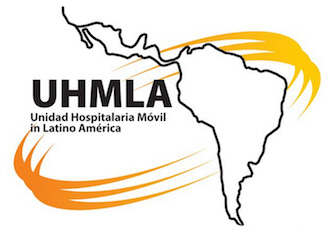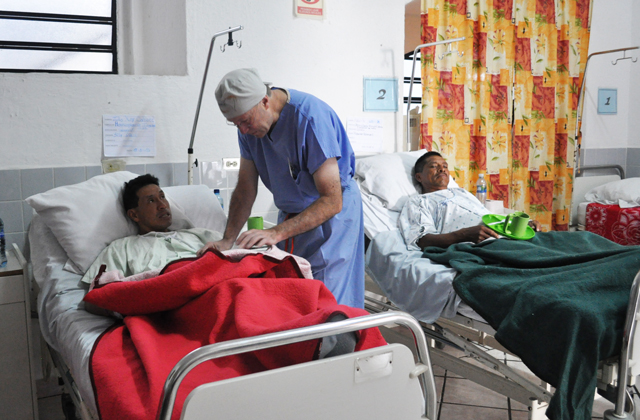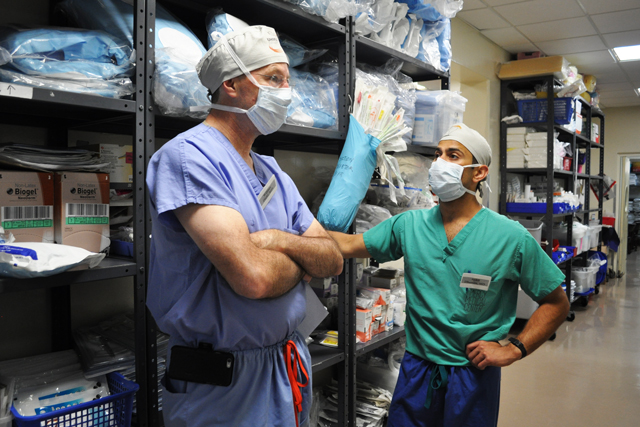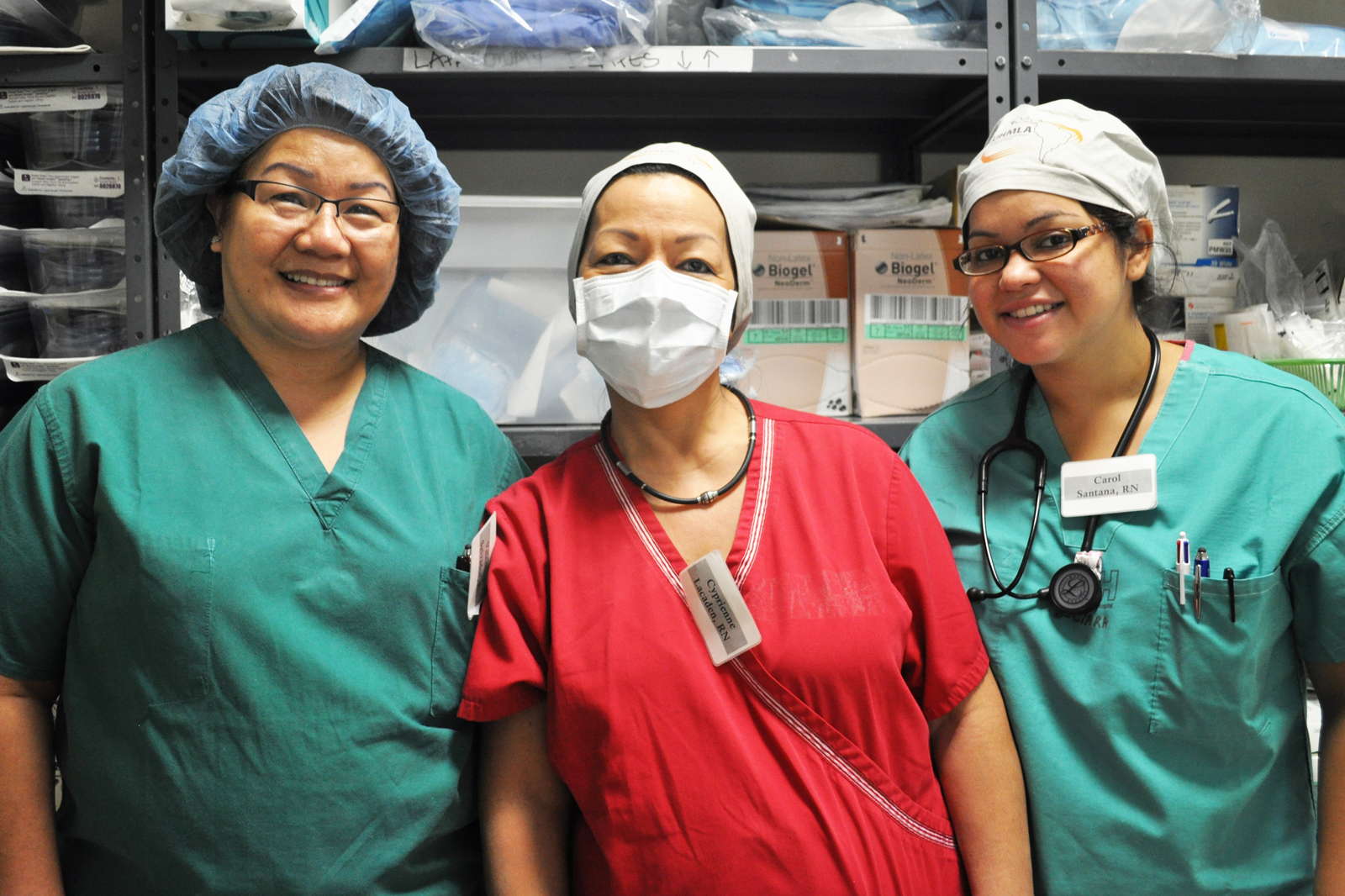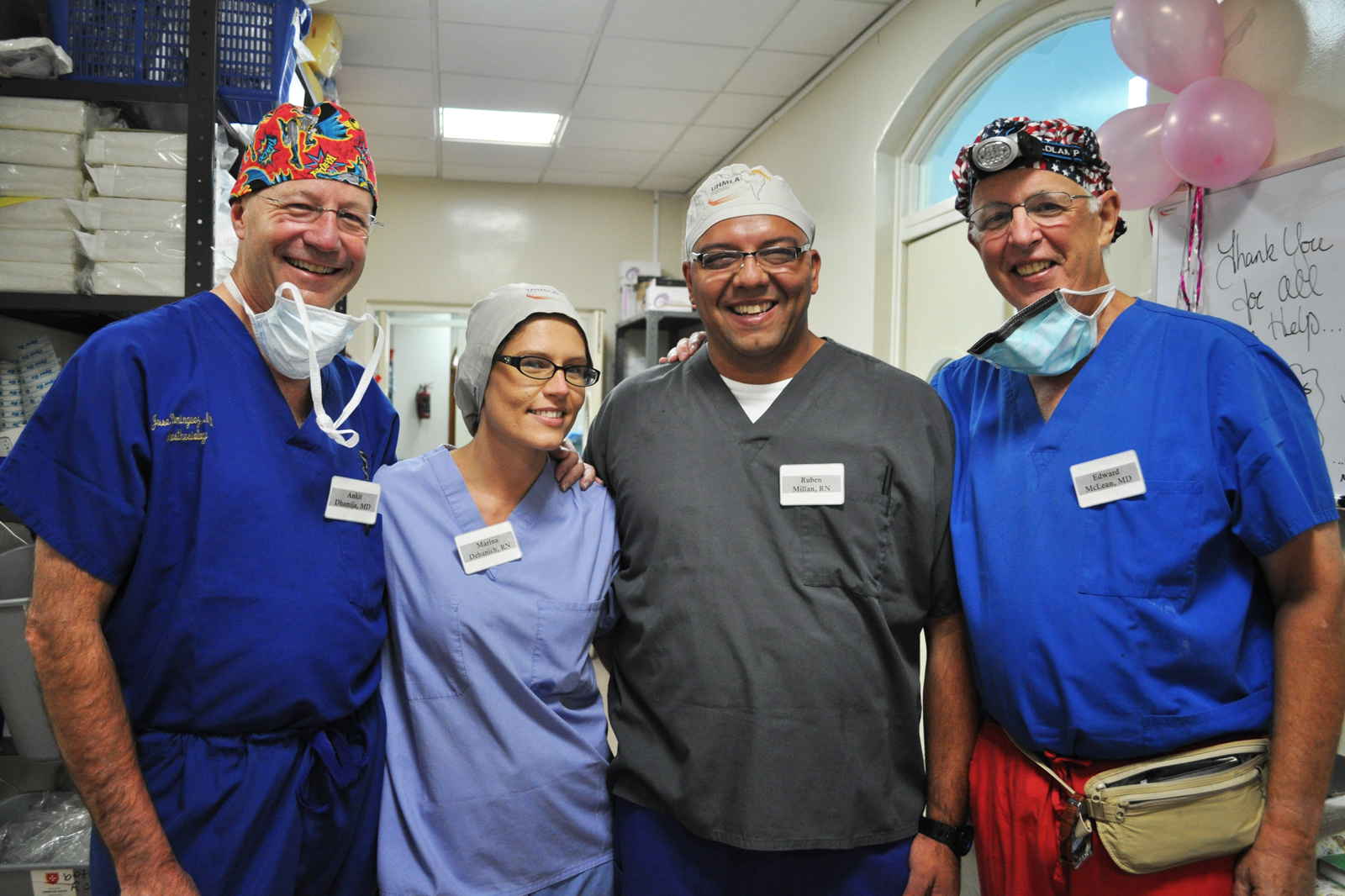A team from UHMLA returned to Guatemala City for another surgical mission in September 2017. This mission was carefully planned by having local doctors and organizers working on the ground months before our arrival. Our team was led by Drs. William Diehl and Gerald LeFever and the site had been inspected prior to our arrival to ensure the operating rooms and facility would be adequate for the needs of our prospective patients.
The Guatemala team members included a full nursing staff for circulating, OR assistance, and PACU care: Rachel, Carmina, Arlene, Francesca, Kristyn and Lindsay. The Anesthesia team comprised Drs. LeFever, Chung and Spitieri. The OBGYN team was led by Dr. Kuchera and PGY3 resident Mina Ayyad. The general surgery team was Drs. Diehl, Bamboat and PGY5 resident Ben Schroer.
Our group met on four occasions in NJ before the trip to collect materials and medical supplies including meshes, sutures, laparoscopic equipment, and OR instruments. The anesthesia team coordinated OR medication and Dr. Bamboat was able to procure 90 vials of donated Exparel - a long-acting local anesthetic that was crucial for post-operative analgesia. One of the great aspects of this trip was our local colleague Ariel Marroquin. He worked with local physicians to generate 65 patients ready for surgical screening on the day after our arrival.
The team arrived in Guatemala City mid-day Saturday without incident. Our 14 oversized medical supply bags made it through customs without a glitch and were loaded onto vans for transport to our humble but clean and safe quarters in Guatemala City. All day Sunday, the teams separated to maximize screening of prospective patients. The nursing staff worked tirelessly to prepare the three operating theatres while Anesthesia and the OBGYN/surgery teams interviewed, examined and discussed surgical care with prospective patients. Local college students volunteered to help with medical translation. In all, 53 patients were selected for surgery. The hospital was only a few blocks away from our residence and our group was able to walk together to and from the hospital safely.
The next 5 days were spent in our element, the operating room. The spectrum of cases included ovarian cysts and tumors, inflamed gallbladders, soft tissue tumors, and pediatric and adult hernias. The hernias ranged from small umbilical defects to giant inguinal hernias. The most memorable hernia case was a gentleman who had been living with a huge inguinoscrotal hernia for more than three decades. Though local doctors had offered to fix it, he had declined out of fear because his own father had died as a result of inguinal hernia surgery. He was no longer able to work as much of his small bowel and part of his colon was in the hernia. When he had heard of the UHMLA team coming, he was able to overcome his fear of surgery by having the faith and trust in our surgical and anesthesia expertise. His surgery was challenging but successful and the patient’s emotional appreciation for not just the repair, but surviving surgery cannot be understated. The patient was able to go back to his village outside Guatemala City and resume working to support his family of 6 children.
Another interesting case involved a 32 y.o. woman who presented to the clinic with what was initially thought to be a soft tissue tumor involving the helix of her ear. By growing her hair and covering the affected ear for years, she tried to lead a “normal” life. Soon it became too difficult to hide the “tumor” from friends, family and her employer. She lost her job as she feared going out in public. Careful examination of her ear revealed hypertrophic scarring from earrings in that area when she was younger. We resected the hypertrophied tissue and reconstructed the ear to resemble her contralateral unaffected ear. Her gratitude was priceless.
The local hospital was clean, safe, and nicely set up. The local staff at the hospital helped us clean instruments and took care of patients who stayed overnight. Every morning before surgery, we performed rounds in the wards on the patients from the day before. This involved teaching the local nurses about post-operative surgical care, analgesia management as well as basic medical management of problems like diabetes and hypertension. A Canadian volunteer named Joe was hired as a 3rd party technical support for the OR. His expertise was critical as he fixed multiple equipment failures and kept the laparoscopic equipment and anesthesia machines/monitors functional.
Each day the gracious staff at our residence quarters prepared meals for us which were well received after a long day of operating. We visited some local restaurants on a couple of occasions in downtown Guatemala City. On our final day, we drove to Antigua about 1.5 hours outside Guatemala City and visited the hospital of our surgical mission the previous year. The Antigua medical facility is being renovated and will hopefully be ready in 2019 for another UHMLA visit.
We are grateful to the entire UHMLA team who volunteered their time and expertise to make this trip a success. The facility in Guatemala City with the onsite local staff and medical coordinators is an asset to UHMLA’s future missions. Guatemala has an abundance of people living in true poverty with a huge surgical burden of disease. We are already planning and looking forward to our next trip in September 2018.
